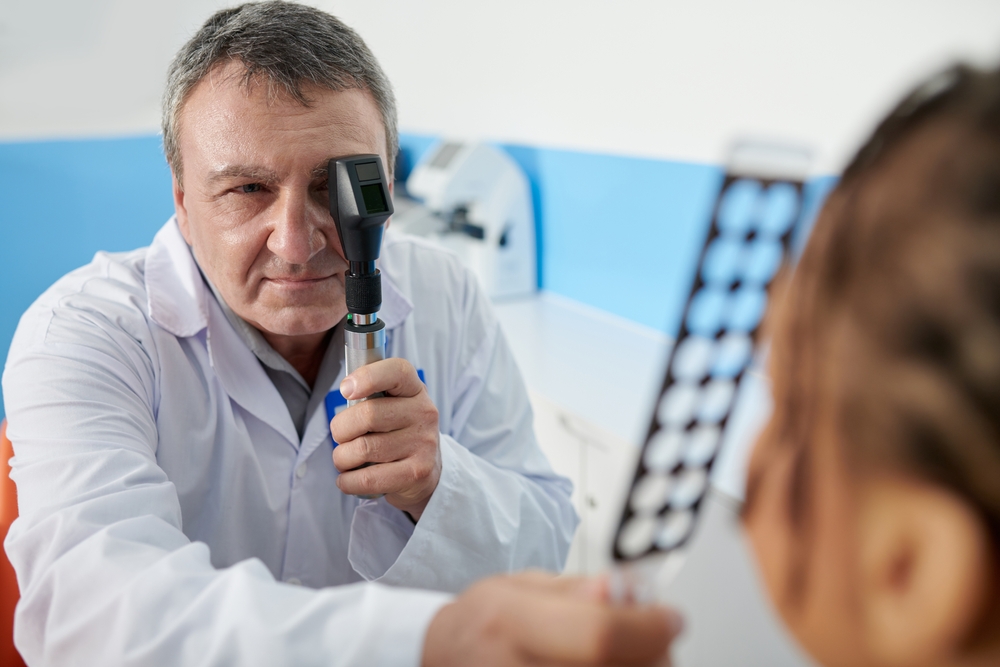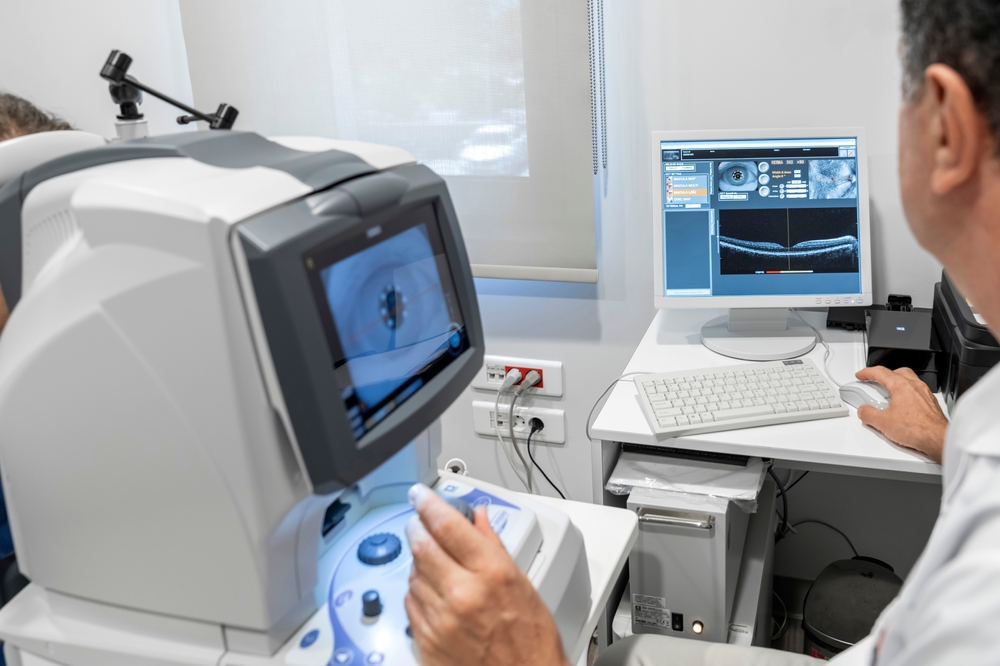The picture during an eye examination—be it a hot air balloon or a small house on a farm—is meant to keep your eye focused on a single point during the test. Staring into an otherwise blank screen in the autorefractor can cause twitching or strain in the eye.
How does it feel to be able to see the world without effort? Well, those of us who can relate to the image below probably miss the luxury of perfect eyesight. This hot air balloon and house mark the beginning of a very tedious process that helps to determine just how poor your vision really is. All you have to do is stare at this picture and the machine will tell you what power spectacles or contact lenses you need.

How does staring at this image help identify your eye power?
The eye machine that commonly uses the hot air balloon image is called an autorefractor. They’re the most commonly used machines to check patients’ eye power.
So, how does the autorefractor work and why does it require you to stare at a picture?
How Do Eye Tests Work?
There was once a time when a manual refraction test was the only technique used to investigate the refractive error of our eyes. It relied on a retinoscope that projected a beam of light into the patient’s pupil. The optometrists could then determine the refractive error by observing the light reflex coming from the patient’s pupil.

However, this was a subjective, time-consuming procedure and the accuracy of the results largely depended upon the skills of the optometrist. Thus, there was a need to automate refractors in order to evaluate the refractive error accurately. Not to sound cliché, but necessity is the mother of all inventions, and thus led to the birth of autorefractors.
Also Read: What Is The Pupillary Light Reflex?
How Does The Autorefractor Work?
Autorefractors check the weakness of your vision by measuring the refractive error of your eyes based on how light rays change as they enter the eye. Now, what does a ‘refractive error’ refer to in the first place?
Refractive errors of the eye prevent you from seeing clearly. The lens inside your eye bends light coming from outside in such a way that it focuses the images. The refraction is shown in the bending of the light. When there is a refractive error, the lens in your eye is bending the light too much or too little. The result is that the image in your eye won’t be very focused.
Refractive errors happen when there is a change in the natural shape of the eye. In the case of myopia (shortsightedness), the eyeball is larger than normal, whereas in hypermetropia (farsightedness), the shape is shorter than usual.
Autorefractors can measure this refractive variation.
Also Read: Why Is It So Difficult To See Underwater?
How Does The Machine Measure Refractive Error?
Once you are seated near the machine with your chin resting on the chin rest, you will be asked to observe the hot air balloon. The optometrist will bring the image in and out of focus. During this process, the machine beams light into your eye. This light is near infrared radiation, a wavelength of light that your eye’s sensors cannot detect, but the lens in your eye will still bend the NIR light. As your eye tries to focus and form a clear image, a sensor present in the machine detects the NIR light being reflected back by the eye.
The autorefractor calculates the refraction by analyzing the changes in the wavefront caused by the eye’s optical system. The measurements include information about the eye’s focusing ability, astigmatism (if present), and other refractive errors.

But Does The Hot Air Balloon Have Any Importance?
Now, coming back to the picture itself. What exactly is the role of the hot air balloon at the end of a long road? Well, it doesn’t really have a major role to play in determining the power of the eye.

The picture—be it a hot air balloon or a small house on a farm—is meant to keep your eye focused on a single point during the eye examination. Staring into an otherwise blank screen in the autorefractor would cause twitching or strain in the eye. It should go without saying, but a relaxed eye ensures that the autorefractor can do its job to perfection.
Also Read: How Do You Steer A Hot Air Balloon?
The Eye Power
So now the optometrist knows the refractive error of your eye… who cares? The optometrist still has to figure out what glasses to give you in order to correct this error. The refractive error of your eye will inform what lens your glasses should be, aka, your eye power.
Ironically, eye power points out how weak your vision is, and helps establish the value of your lens power. The lens power that is measured in dioptres, which tells you the strength of the glasses and the level of correction you require to achieve normal vision. The value is shown in either minus or plus eye power.
Optometrists will then insert a series of lenses based on the value given by the autorefractor. Wearing this changeable lens equipment, you must try to read the letters or numbers written on a chart. This chart is called the Snellen chart, and should be kept at a distance of 20 feet (6 meters) from you.
Then you will go through the tiresome process of “Is this lens better or… this one?” until you finally find the lens that gives you an HD view of the world. The same process is done for both eyes, and voila! You now have an accurate prescription that suits your eye power.
Also Read: Easy Tricks That Can Help You See Without Glasses!
Conclusion
The purpose of the pastoral image is to simply get your eyes to focus on a single point during the eye exam. It isn’t really important what image is used, so long as it gets the patients to focus on one point.
Assuming that you’re one of the many who have to wear glasses to get a clear view of the world, have you ever wondered if not wearing them would make your eyesight worse? Click here to find out.
Or if you’re just someone who wants freedom from the clutches of wearing glasses everywhere every day, you might be interested to know if these eye exercises work or not. Click here to find out more about that!
Also Read: If You Need Glasses, But Don’t Wear Them, Does Your Eyesight Get Worse?
How well do you understand the article above!

